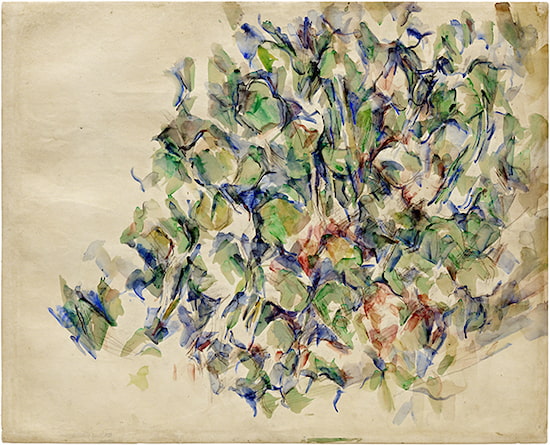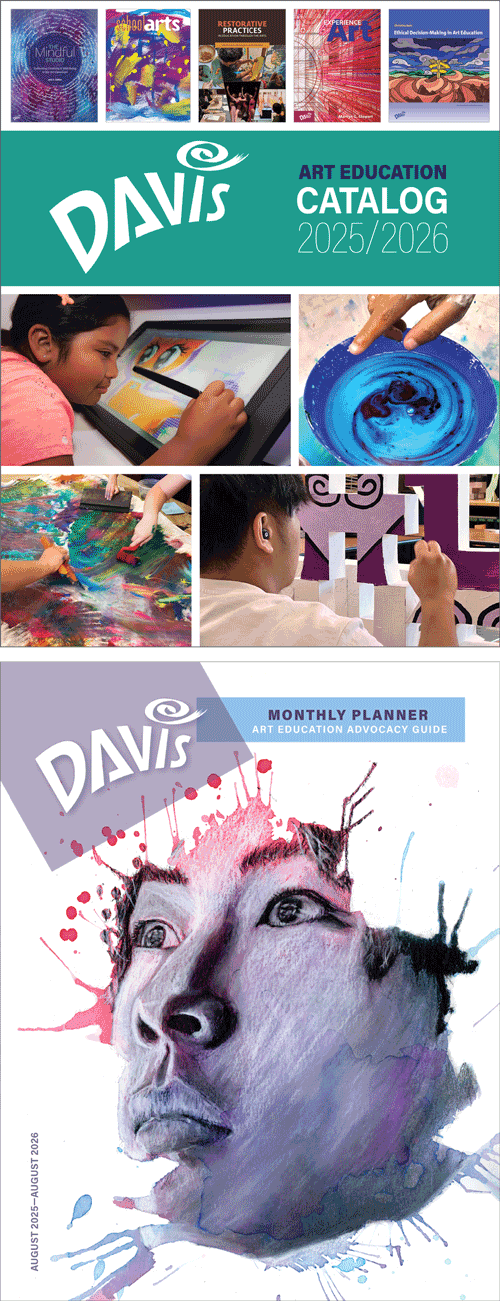World Watercolor Month: Paul Cézanne
What better artist to celebrate World Watercolor Month than Paul Cézanne? His brilliant studies in watercolor clearly lay the foundations of what he called “modulation.” This is the use of subtle gradations of color to form tints or shades, rather than the traditional technique of adding white or black to a color. Artist and illustrator Charlie O’Shields (born 1971) helped found World Watercolor Month in 2016. He created a website and social artist movement dedicated to promoting and bringing together the vast community of watercolor artists around the world.
 |
| Paul Cézanne (1839–1906, France), Foliage, 1895. Watercolor and pencil on paper, 17 ⅝" x 22 ⅜" (44.8 x 56.8 cm). Image © 2025 The Museum of Modern Art, New York. (MOMA-P4120) |
Because Cézanne included an underlying structure to the spontaneous Impressionist technique, he is known as a Post-Impressionist. Between the 1880s and 1890s, Cézanne developed a technique called the “constructive stroke.” It was grounded in the basic geometric shapes of cylinder, cube, and cone (circle, square, and triangle), as Renaissance art had been. Cézanne built up his forms from groupings of parallel hatched brushstrokes, creating the appearance of mass. This study of foliage clearly shows how he built up form from geometrically shaped strokes. This early example of that approach precedes the Cubism developed by Pablo Picasso (1881–1973) and Georges Braque (1882–1963), who were clearly influenced by Cézanne’s late style.
Like most major art movements grounded in strict theory, Impressionism ran its course by the 1870s. By the 1880s, artists began to reject the limited theory of Impressionism because it neglected psychological depth and emotional involvement. Post-Impressionists still focused on light and color, but rejected the detached mood of Impressionism and its emphasis on technical aspects of the work rather than subject. This movement represented a transition from Impressionism to the highly subjective strains of art of the 1900s. The Post-Impressionists reinvested the subject matter with importance by using it as the focal point of the traditional elements of compositional structure.
Cézanne was born in Aix-en-Provence in the south of France. He developed an interest in art from an early age. Although he initially attended law school, Cézanne attended art classes at the School of Fine Arts in Aix starting in 1856. He eventually decided that he wanted to be a painter and moved to Paris in 1861. His father granted him an allowance that permitted him to live independently, and he left his son a large inheritance when he died.
While studying painting, Cézanne explored the great artists of the Renaissance and Baroque periods. He also studied Romanticism, especially the work of Eugène Delacroix (1798–1863). He also gravitated toward more unconventional contemporary painters such as Gustave Courbet (1819–1877) and Édouard Manet (1832–1883).
The most significant influence on Cézanne’s early work began when he moved to Pontoise in 1872. There he worked with Camille Pissarro (1830–1903), who was an unrecognized painter at the time living near Paris. Pissarro introduced Cézanne to the Impressionist palette and technique of painting outdoors. Cézanne developed a painting style that involved rapidly working outdoors and at reduced scale, using small touches of pure color. He exhibited with the Impressionists in 1874 and 1877.
In the 1880s, Cézanne spent most of his time in Aix. Feeling that Impressionism was too restrictive and formulaic, he resolved to develop a style that embodied the direct observation of nature of Impressionism and the balanced, structured compositions of the Renaissance and Baroque.
Correlations to Davis programs: Explorations in Art 2E Grade 1: 4.2; Explorations in Art 2E Grade 2: 1.3, 1.4; Explorations in Art 2E Grade 3: 5.5; Explorations in Art 2E Grade 5: 4.2, 4.3; Experience Art: 4.2, 4.4; The Visual Experience 4E: p.290; Discovering Art History 4E: pp.432-433

Comments